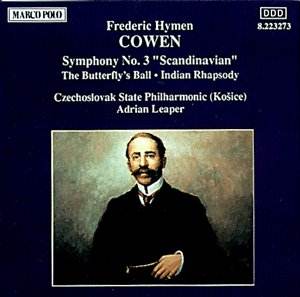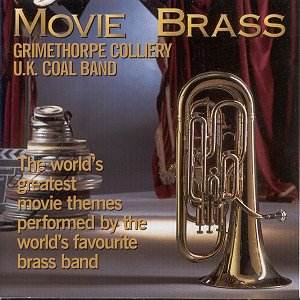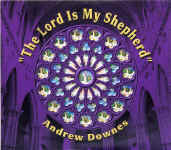 Composer: Frederic Hymen Cowen
Composer: Frederic Hymen Cowen
Works: The Butterfly’s Ball, Indian Rhapsody, Symphony No. 3 in C Minor ‘Scandinavian’
Performers: Czechoslovakian State Philharmonic Orchestra/Adrian Leaper
Recording: House of Arts, Kosice, Czech Republic, 1989
Label: Naxos
Frederic Cowen, once a luminary in the British musical landscape, has been overshadowed by the musical canon that emerged in the aftermath of his own prolific career. His works, particularly those included in this recording, resonate with a charm that reflects both his formal training and his inherent ability to evoke the picturesque. The inclusion of “The Butterfly’s Ball,” “Indian Rhapsody,” and the “Scandinavian” Symphony No. 3 in this release is emblematic of Cowen’s diverse compositional palette, which intertwines the influences of Victorian England with a burgeoning nationalistic expression, a curious blend that deserves renewed attention.
The “Scandinavian” Symphony, inspired by Cowen’s travels, showcases an orchestral color that is both vibrant and engaging. The first movement opens with a pastoral theme introduced by the wind instruments, a delightful dialogue that is soon punctuated by bold strings reminiscent of Beethoven’s dynamic contrasts. Leaper’s direction brings clarity to these textures, allowing the thematic material to unfold with a pleasing naturalness, though some passages seem to lack the depth of emotional resonance that might elevate them beyond mere pleasantness. The second movement, with its off-stage horns, captures a romanticized vision of the Scandinavian landscape that is both evocative and refreshing. The Mahlerian overtones in the lyrical string passages, particularly around the 5’22” mark, reveal Cowen’s innate ability to paint with sound, despite the movement’s slight structural indulgence.
The third movement stands as the most inventive segment of the symphony, where the interplay between the violas and cellos introduces a catchy motif that is intricately woven into the fabric of the orchestration. This rhythmic energy, coupled with the buoyancy of the upper strings, creates an infectious enthusiasm that carries through the movement. However, the finale presents a departure from the Scandinavian theme, veering towards an Arabian flavor that may confuse the listener’s expectations. This disjointedness, coupled with a somewhat crude main motif, raises questions about Cowen’s grasp on the musical idioms he sought to represent; the recording’s balance, wherein the strings occasionally sound boxed in, does little to aid the overall coherence of this movement.
“The Butterfly’s Ball” operates in contrast as a light-hearted overture that captures the ephemeral nature of its titular subject. While not particularly substantial, it is a testament to Cowen’s knack for orchestral color and melodic invention, echoing the playful spirit of its source material. Leaper deftly navigates the textures, revealing a buoyant quality that is at times reminiscent of Richard Strauss’s lighter works, particularly in its comic undertones.
The “Indian Rhapsody,” despite its title, presents a more generalized Orientalism than a faithful representation of Indian musical traditions. It features well-crafted orchestral textures but lacks the authenticity that could have elevated it to a more significant cultural commentary. The performance suffers from the recording’s somewhat dry acoustics, which do not do justice to the richness of the orchestral playing. The proximity of the microphones to the strings creates a lack of warmth, rendering some of Cowen’s intricate orchestration somewhat flat—a curious choice for a label known for quality recordings.
This release is a commendable effort to reintroduce Cowen’s works to modern listeners, yet it is hampered by technical limitations in the recording. The performances, while competent under Leaper’s baton, do not fully capture the potential of Cowen’s orchestral textures, leaving the listener yearning for a more immersive experience. Cowen’s contributions to the British musical heritage warrant deeper exploration; however, this recording serves as a reminder that the artistry of the performance must complement the composer’s intent to achieve lasting resonance. The rediscovery of Cowen’s music is essential, yet it is equally crucial that future recordings strive for the high standards that his music undoubtedly deserves.



